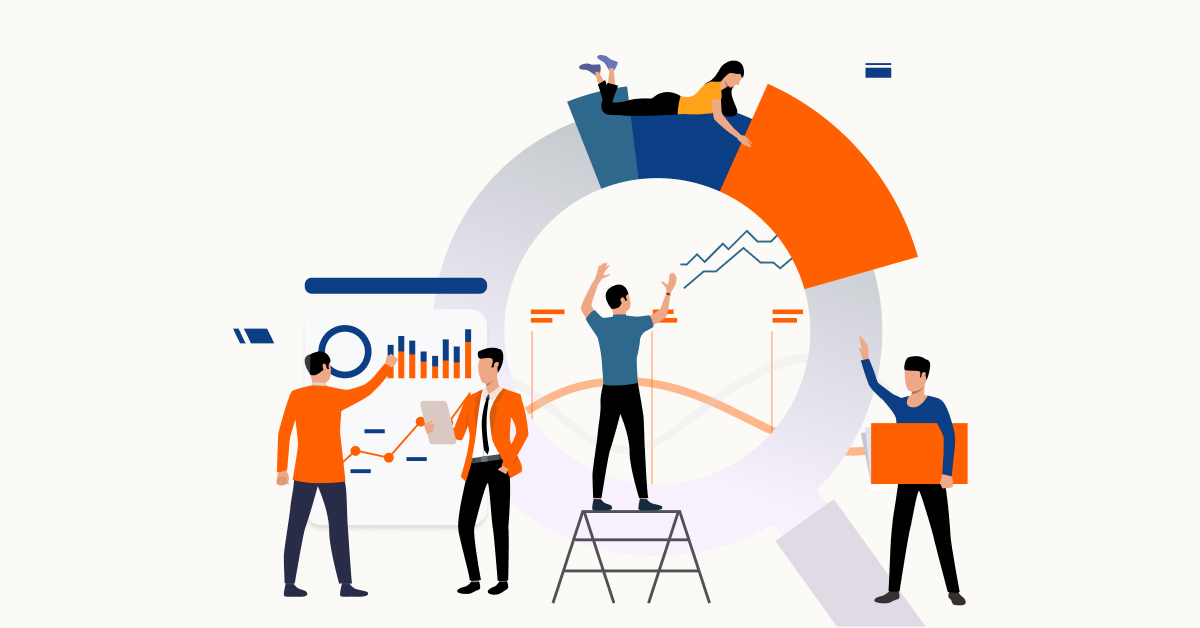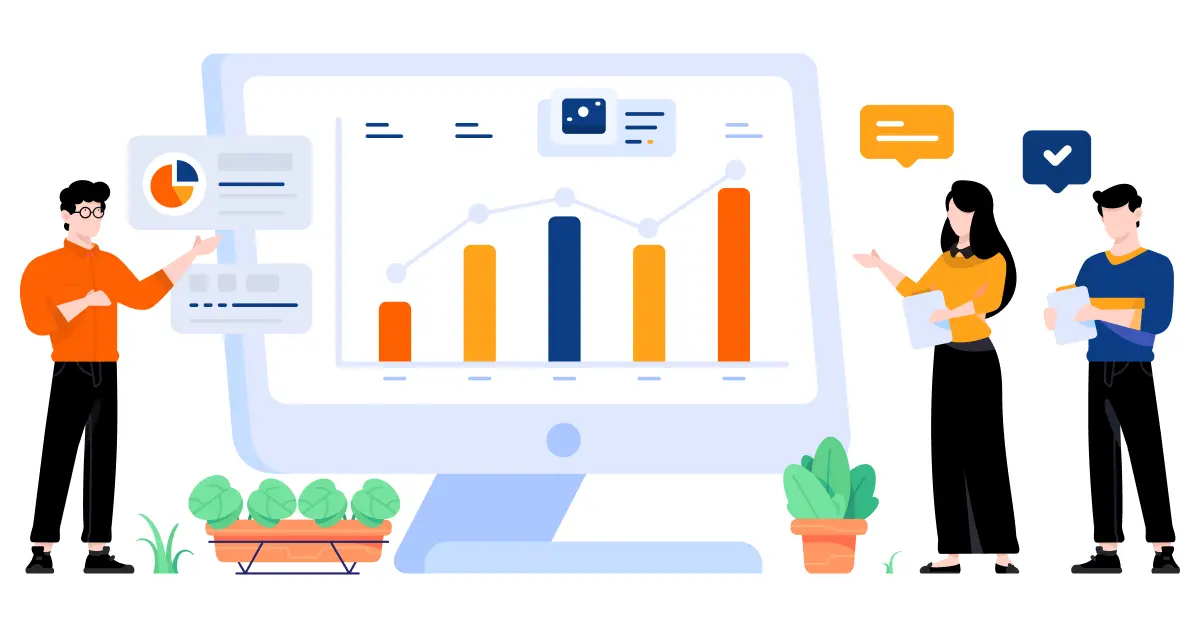
These days, it is crucial for every organization to have an efficient employee performance management system. Most corporations must increasingly consider ways to improve their staff’s productivity, interest, and health to remain viable within a given market sector.
This ultimate guide will discuss multiple fields of Employee Performance Management (EPM), starting from the explanation of how to track employee productivity, what to do when an employee becomes burned out, the concept of employee engagement, the difficulties in managing remote employees, the challenges of EPM, and how to improve employee performance. Most importantly, how can an employee monitoring software act as a savior here?
Table of contents
Understanding Employee Performance Management
Employee performance management is a business-related, structured process that seeks to augment employee productivity and, consequently, organizational efficiency. This includes establishing specific goals, evaluating performance, observing, recommending, and following up on strategies to achieve goals.
To understand workforce management, it is also important to know the following concepts.
1. Employee Productivity Monitoring
Performance must be measured to determine where employees can improve most and where they can improve most. HR monitoring can include task completion rate, quality, and time. The managers can identify high-performing employees and those who need more coaching by monitoring them.
2. Managing Employee Burnout
High employee turnover, stress, and burnout also hurt organizational climate and performance. A decrease in productivity, an increase in absenteeism, and low engagement are signs of such a state.
It is time to organize the exact methods of preventing employee burnout, including the following:
- Marriage policy — helping employees elaborate the approaches to combining work and personal responsibilities.
- Balance work and mental health days — allowing employees to take breaks when needed.
- Smart Work — providing intelligent alternate approaches to work-rest cycles.
3. Employee Engagement
Employee commitment is key to Employee performance management. Engaged employees are easier to manage, control, and retain than apathetic, unproductive, and unloyal ones. Promotion or incentives for hard work, professionalism, career growth, and company culture can boost employee engagement. Constant feedback and more communication channels help rejuvenate staff.
It is crucial to understand employee performance management by learning about employee productivity monitoring, employee burnout, and employee engagement. Understanding these helps one make better business decisions.
What are the Challenges to Employee Performance Management?
Telecommuting has made employee performance management difficult for organizations. Understanding that managing remote employees differs from managing them in an office setting is crucial to solving the problem.
1. Poor Interprofessional Communication
Remote work often leads to fragmented communication. Employees may miss out on informal interactions and face-to-face meetings, which are essential for building relationships and ensuring clear, effective communication.
2. Lack of Clarity in Expectations and Goals
Remote employees may struggle with unclear expectations and goals, leading to confusion about priorities and job responsibilities.
3. Unclear Performance Metrics
Defining and measuring performance can be more challenging in a remote work setting. Traditional metrics may not apply, and new metrics might be difficult to establish.
4. Inadequate Training and Development
Remote employees might not have the same access to training and development opportunities as their in-office counterparts. This can hinder their growth and adaptability.
Understanding Employee Analytics
If you are working with someone, you can use analytical tools to rate their work. With real-time data handling, you can see how well your employees are doing and change things that slow them down. This tells businesses what they need to know to make better choices about improving employee operational efficiency.
When you know about staff statistics, you can see links between the past and the present. This helps determine how the employee will perform in the future and make changes that are best for both the company and the employee.
How to Improve Employee Performance?
This raises the question of how it is possible to transform employee performance management, and the answer is that it can be done in various ways. Here are some strategies to improve workforce productivity:
1. Set Clear Goals and Expectations
Ensure employees agree on the roles and responsibilities of undertaking a particular task. To effectively manage a project, clients should have clear goals to guide and give them purpose.
2. Provide Regular Feedback
Regular feedback can show employees what they are doing correctly and possible areas that require change. Such feedback sessions greatly benefit as they create a constant growth process.
3. Offer Training and Development
Invest in employee training programs to enhance time management skills and knowledge. Growth opportunities can boost morale and productivity.
4. Recognize and Reward Achievements
Appreciate work efforts and place value on your human capital. This shows that concepts such as recognition and rewards at the workplace are vital in improving motivation and even overall performance.
5. Use The Employee Monitoring Tool
This is intended to fit the company’s employees with monitoring software to capture their desired performance. Like other monitoring tools, Leapmax presents a range of time-tracking tools that allow managers to become aware of employees’ productivity and potential problems that require attention.
Measuring Workforce Performance
It is necessary to measure workforce performance as the appraisal depends on it. Appraisal refers to quantifying aspects of the people at work organization. Performance measures are critical in this regard and are generally known as Key Performance Indicators (KPIs). Common KPIs include:
- Productivity Metrics: Determine how much work is being done within an hour or any other period.
- Quality of Work: Evaluate the extent to which you have accrued different tasks and the exactness of your job.
- Attendance and Punctuality: Follow the progress of attendance among workers and their compliance with work schedules.
- Customer Satisfaction: During research, assess the effectiveness of the employees’ performance to gauge customer satisfaction and their feedback.
The Role of Employee Monitoring Software
Keeping an eye on workers is a big part of current management. This can be done with many different tools. These tools help businesses make better choices by giving them useful information about what their employees do.
Some important parts of the tools used to keep an eye on workers are –
- Time Tracking: Ensure employees take manageable time frames to accomplish those tasks. This aids in making a productive pattern and identifying what can be done to increase productivity.
- Activity Monitoring: Monitor clicks, applications, and website usage, as well as the number of times an employee has pressed certain keys. This information can be used to comprehend work-related behaviors and determine what can interfere with them. Activity monitoring software can easily track what employees currently doing.
- Performance Reports: Prepare elaborate organization performance reports to indicate employee productivity levels. These reports offer a visibility solution into what happens in productivity and how it changes over time.
- Real-Time Alerts: You will be notified when particular activities/behaviors that may indicate poor performance are detected. This will help you organize, coordinate, and intervene early enough to prevent such outcomes.
Current prevailing solutions such as Leapmax have solid platforms that assist in effectively monitoring organizations’ employees. Thus, these tools are useful to any company in ensuring that it monitors its employees and positively influences their performance.
Implementing Time Tracking Software
Apps that keep track of time are another tool used in Employee performance management. You can use them to keep track of how many hours you’ve spent on different jobs and tasks. Some of the best things about time-tracking software are:
- Enhanced Accountability: Workers are more committed to the tasks assigned to them or the organization than other periods of the day when time is not being monitored.
- Accurate Billing: This software is especially important to businesses that charge their clients per hour worked because it tracks time and ensures an accurate method of billing and invoicing.
- Productivity Analysis: Regarding time tracking, reviewing productivity entails examining time tracking and the structure of delays in the work process.
Conclusion
Keeping an eye on workers’ performance is one of the best things any company can do to reach its goals. So, companies will do much better if they develop ways to improve performance, deal with problems like employee productivity, employee burnout, and engagement, manage remote workers better, and understand employee workforce analytics.
Other tools, like software for monitoring employees and time-tracking software, can also help with these tasks. Companies that use Leapmax can get tools that help them reach their goals and cover all parts of Employee performance management. By using these strategies, businesses can build a busy, involved, and inspired staff and make it easier to meet long-term performance goals.







